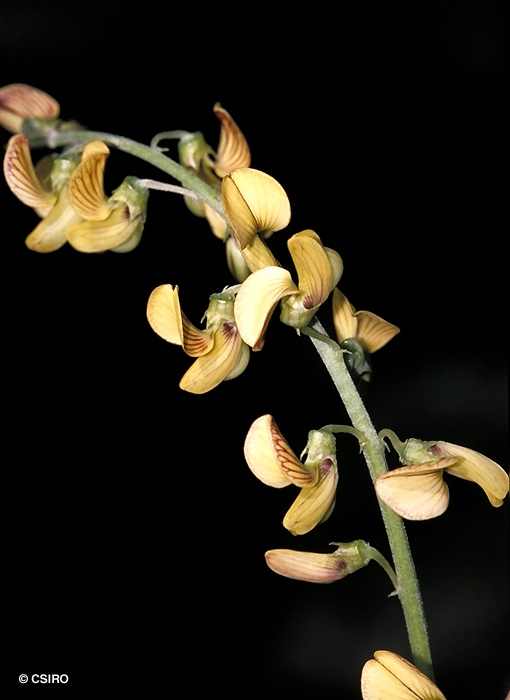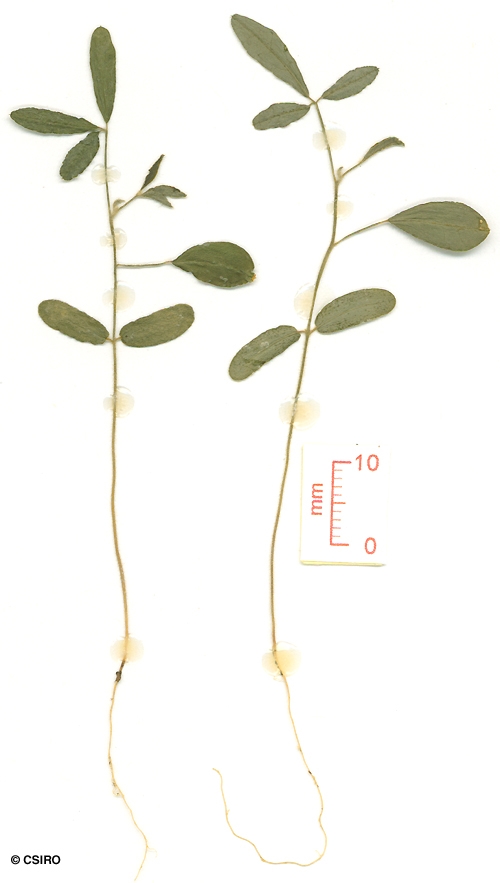Australian Tropical Rainforest Plants - Online edition
Crotalaria lanceolata E.Mey.





Meyer, E.H.F. (1836) Commentariorum de plantis Africae Australioris : 24. Type: In graminosis humidis inter fluvios Omsamculo et Omcomas, altit. 400 ped. (V,c.).
Rattlepod
Flowers and fruits as a shrub about 1 m tall.
Twigs longitudinally ribbed and clothed in short white simple hairs. Compound leaf petiole about 1-4 cm long. Leaflet blades about 2-14 x 0.3-1.9 cm, lateral veins forming loops inside the blade margin. Upper surface of the leaflet blades glabrous, lower surface clothed in white prostrate hairs. Stipules absent.
Inflorescences about 8-20 cm long. Flowers borne singly in the axils of narrow, about 1-3 mm long, bracts. Calyx about 3-4 mm long clothed in minute appressed hairs. Petals: standard yellow, veins reddish, about 7.5 x 8 mm; wings about 8 mm long usually exceeding the keel. Stamens 10, dimorphic, the longer filaments with long anthers and the shorter filaments with short anthers. Anther filaments fused to form a tube which is open on one side. Ovary with a distinct strip of longer hairs on the upper side.
Pods cylindrical, about 20-35 x 4-6 mm each with about 24-50 seeds. Seeds flattened, reniform or irregularly heart-shaped, about 2-3-mm long. Cotyledons about 2 x 1.5 mm, radicle about 2 x 1 mm.
Cotyledons about 12 x 5 mm, petioles about 1 mm long. First leaf simple, about 16 x 8 mm, petiole about 7 mm long. Second leaf compound with three leaflets, leaflet blades about 18 x 5-6 mm, leaflet stalks about 0.5 mm long. At the tenth leaf stage: under surface of the leaflet blades clothed in white prostrate hairs and appears much paler than the upper surface. Stem surface ribbed with three ridges running down the stem from the base of each petiole. Seed germination time 9 days.
An introduced species originally from tropical Africa, now naturalised in NT, CYP, NEQ, CEQ and southwards as far as coastal central New South Wales. Altitudinal range in northern Australia from near sea level to 900 m. Usually grows as a weed on agricultural land but also found in wet sclerophyll forest and on the margins of rain forest.
Overseas has been utilized as a pasture species. Hacker (1990).





